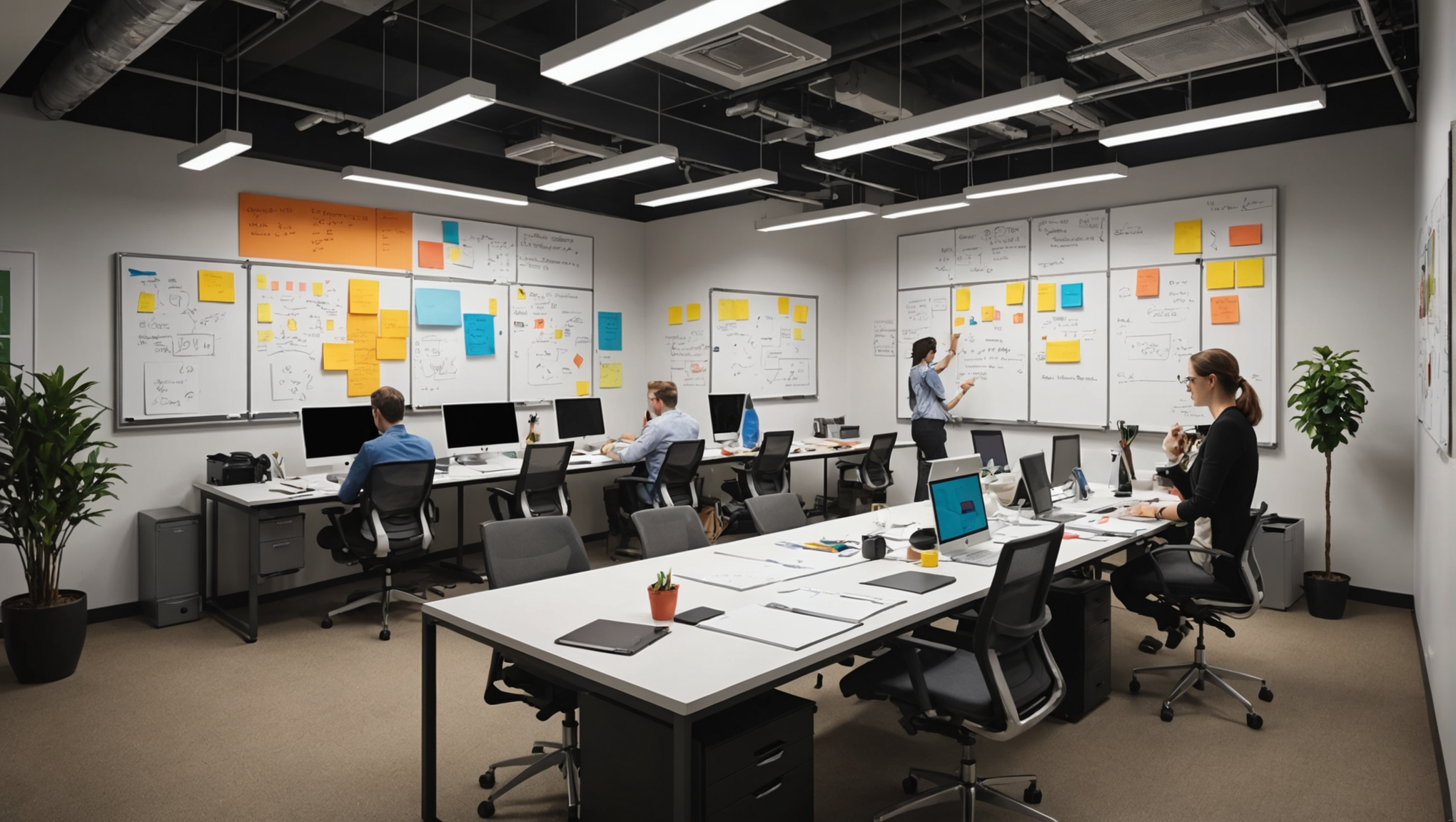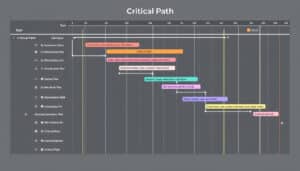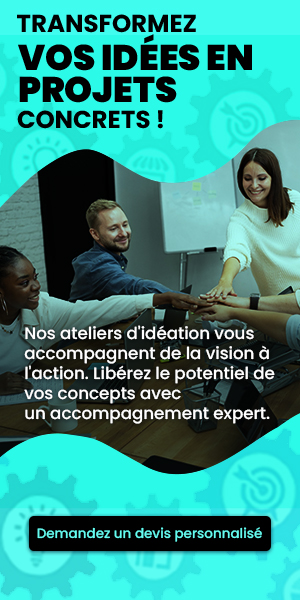Imagine a process that transforms abstract ideas into concrete solutions, while placing the user at the heart of its development. This is the magic of design thinking, an innovative method that revolutionizes the way we conceive products and services. This approach, which combines creativity and rigor, allows us to understand and anticipate user needs, while promoting collaboration.
Beyond simple tools, design thinking relies on a series of structured steps, ranging from empathy to prototyping, aimed at creating tailored solutions. In an environment where challenges evolve quickly, companies must adapt and innovate effectively, and design thinking presents itself as an appropriate response. Insights and reflections, it’s a journey towards creative thinking, where failure becomes an opportunity to learn and improve. By emphasizing co-construction and positive change, this method plays a key role in transforming ideas into disruptive innovations. With design thinking, not only are processes improved, but it also gives a voice to end users.
🔥 Nous recommandons Ideamap
Ideamap est l’outil idéal pour un brainstorming ou un projet collaboratif. Grâce son interface facile et à ses fonctions IA, Ideamap booste votre créativité tout en favorisant une meilleure organisation de vos idées pour atteindre vos objectifs.
The design thinking is much more than just a simple innovation method; it is an approach that places the user at the center of every creative process. This process unfolds in various stages, each aimed at fostering the emergence of innovative solutions tailored to the real needs of users. In this article, we will explore the fundamental principles of design thinking, its stages, and above all, we will provide practical recommendations to maximize its effectiveness in transforming ideas into concrete results.
The Foundations of Design Thinking
To understand design thinking, it is crucial to grasp its foundations. At the intersection of analytical thinking and intuitive thinking, this method revolves around three essential pillars: empathy, experimentation, and creativity. The first step in this approach involves developing a deep understanding of the needs and desires of users. It is about putting oneself in their shoes, listening to their experiences, and gathering insights that will guide the design of solutions.
Once this understanding is acquired, design thinking encourages the exploration of innovative ideas. This involves brainstorming sessions where all ideas are welcome, without judgment. This freedom of expression is fundamental to unleashing the creativity of participants and stimulating the emergence of uncharted solutions. Rapid prototyping, the next step, allows these ideas to be materialized in the form of mockups or models in order to test their viability. This fosters immediate feedback, enabling necessary adjustments before final implementation.
The Key Steps of Design Thinking
Design thinking can be broken down into five key steps: empathy, definition, ideation, prototyping, and testing. Each of these steps is interconnected and refines the creative process. Let’s focus on these phases and explore practical strategies to optimize each step.
1. Empathy: This initial phase consists of observing and interacting with users. To go beyond a simple survey, favor immersion sessions where you can observe users in their natural environment. Note their behaviors, frustrations, and interactions with the product or service. Enrich this observation with in-depth interviews to gather personal anecdotes. Empathy is key to uncovering underlying needs that users themselves may not always realize.
2. Definition: In this phase, synthesizing the information gathered during the empathy stage is crucial. Establish a clear assessment of the identified issues. Create a problem statement that translates these needs into understandable and actionable terms. This formulation should be concise and inspiring, guiding the next steps of the process. Involving the team in this step is essential to ensure that everyone shares a common understanding of the challenge to be addressed.
3. Ideation: Here, creativity should flourish. Organize collaborative brainstorming sessions where each participant can propose ideas, even the wildest ones. To stimulate creativity even further, integrate techniques such as the SCAMPER method or reverse brainstorming. These techniques help see the challenge from different angles and consider innovative solutions. Don’t hesitate to divide the team into smaller groups to foster the exchange of ideas.
4. Prototyping: Transform the selected ideas into tangible prototypes. These can be mockups, videos, or even digital simulations. The main objective is to accelerate the process of materialization and allow for quick feedback. Invite users to test these prototypes; this early validation will help you avoid costly mistakes during the final launch.
5. Testing: Finally, the testing phase is essential for refining the solution. User feedback on the prototypes must be meticulously analyzed. Integrate this feedback into the creation of new iterations of the prototype. This process may seem repetitive, but it is vital to ensure that the final product will meet the needs identified at the outset. Also consider adapting your prototypes for different user segments to ensure an even more inclusive solution.
Strategies for Integrating Design Thinking into Daily Life
Although adopting design thinking may seem complex, there are several ways to effectively integrate it into daily routines. Here are some practical recommendations for teams or companies that want to make this approach an integral part of their innovation culture.
1. Promote a Culture of Innovation: Create an environment conducive to experimentation and failure. Encourage your teams to take calculated risks, learn from their mistakes, and share these experiences. This will foster an open mindset where everyone feels free to contribute to the innovation process.
2. Implement Design Thinking Workshops: Regularly organize workshops dedicated to design thinking to raise awareness among your teams. These sessions can focus on specific projects or allow exploration of new ideas in a playful way. By integrating these workshops into the regular calendar, you will promote continuous learning.
3. Utilize Digital Tools: Adopt digital tools that facilitate design thinking. Online collaboration platforms, such as Miro or Figma, allow teams to easily exchange ideas and prototypes. These tools can help maintain team engagement and energize the creative process.
4. Involve the Whole Organization: Design thinking should not be limited to a single isolated team. Involve different stakeholders and disciplines. By integrating diverse perspectives, you will pave the way for richer and more inclusive innovation.
5. Measure and Adjust: Like any process, measuring impact is crucial. Define clear indicators and track the progress of your projects. This data will allow you to recalibrate your approach and adjust your strategies for the future.
In summary, design thinking emerges as an essential method for innovating effectively. By placing the user at the center of the process, this approach allows for generating solutions that are adapted and relevant. By strategically integrating the different steps of this approach into your daily routine, you can inject a sustainable innovation dynamic within your organization. To learn more about design thinking and to discover examples of application, feel free to explore other resources.
To deepen the impact of design thinking and its tools, specialized sites like Tomorrow Ideation and Adobe offer detailed perspectives. Adopting design thinking strengthens your organization’s agility and creativity, and most importantly, it ensures that your innovations meet the real expectations of users.

Design thinking : effet de mode ou réel outil du changement ?https://t.co/u7sQdJy3jz pic.twitter.com/qWornEDHYA
— OUR(S) | Le média de la communication (@OURSCOM_FR) July 23, 2024
FAQ on Design Thinking
What is design thinking? It is a creative, user-centered approach that facilitates innovation by blending analytical and intuitive thinking.
What are the main objectives of design thinking? The goal is to understand user needs in order to design innovative solutions that address specific issues.
What are the key steps of design thinking? The steps include empathy, problem definition, ideation, prototyping, and testing solutions.
Why is design thinking important for businesses? This method allows companies to increase their effectiveness by developing products and services that truly meet customer expectations.
How can design thinking stimulate innovation? By emphasizing the user experience and fostering collaboration between different teams, design thinking paves the way for creative solutions.
What tools are used in design thinking? Tools such as empathy maps, personas, and rapid prototypes are used to visualize and test ideas.
How to measure the impact of design thinking? Impact can be evaluated through user feedback, customer satisfaction metrics, and the commercial success of developed products.














